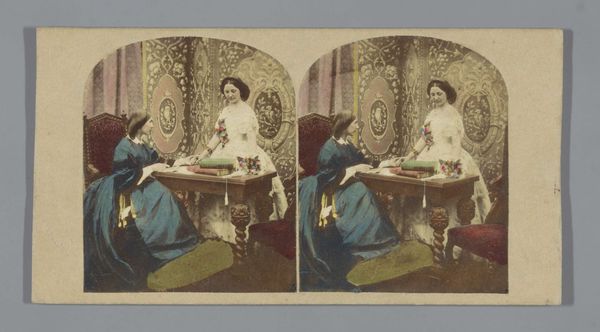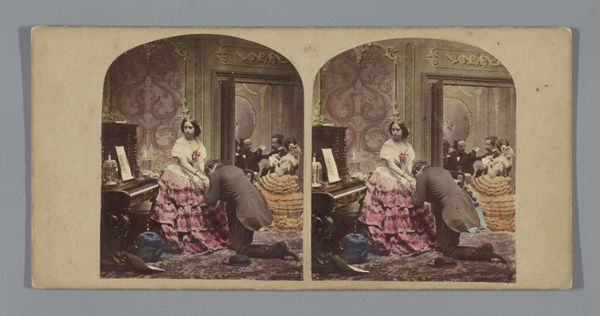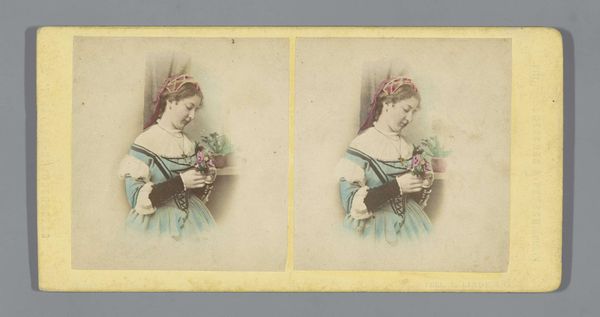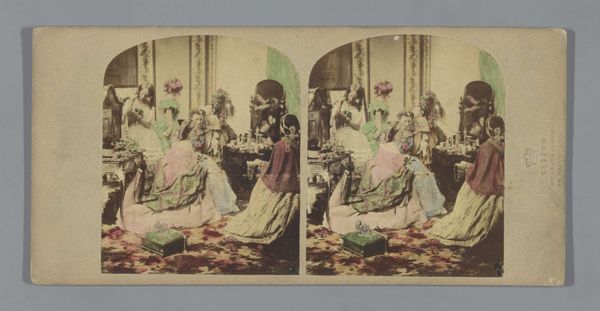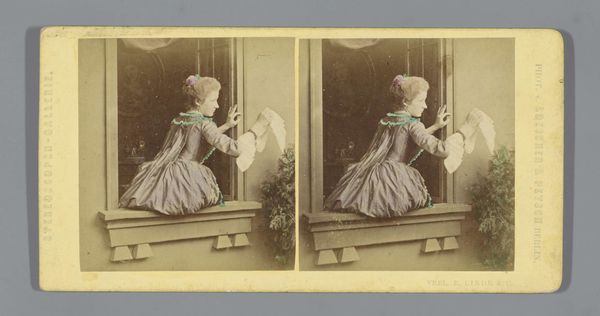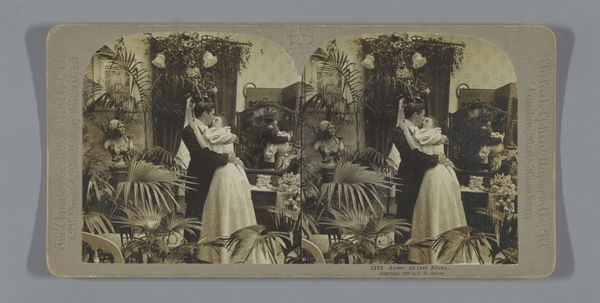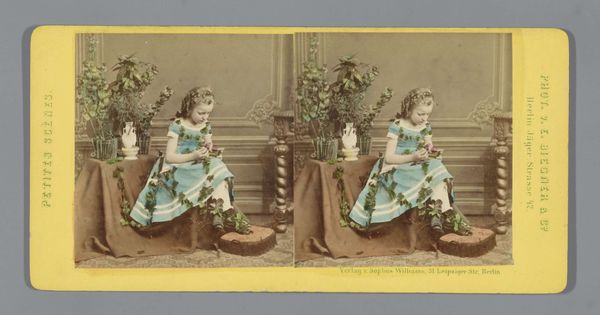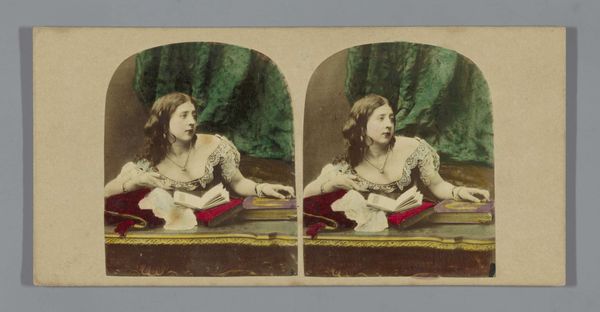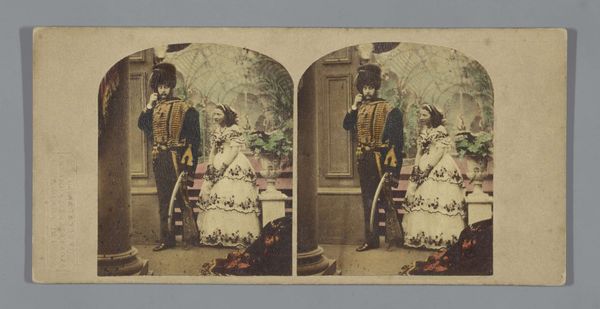
photography
#
portrait
#
water colours
#
photography
#
coloured pencil
#
genre-painting
#
realism
Dimensions: height 85 mm, width 174 mm
Copyright: Rijks Museum: Open Domain
Editor: This work, entitled "Tafereel met een bruid voor een spiegel," was created sometime between 1852 and 1863 by Hablot Knight Browne. It’s striking because of its rather melancholic mood—the bride doesn't look particularly excited about her upcoming nuptials. What visual cues do you find most evocative here? Curator: The mirror is a compelling symbol here. Think of it as representing not just vanity, but also reflection, self-examination. The bride's reflection offers a secondary version of herself, perhaps revealing her inner thoughts or anxieties about the marriage. Consider, too, the closed posture of the attendant—does this convey something about societal expectations? Is she projecting internalised constraints upon the bride-to-be? Editor: That’s fascinating. I hadn’t thought about the attendant's posture playing into societal expectations of women. I was mainly focusing on the bride's almost despondent expression, and now you’ve drawn my attention to how those two elements create such a powerfully subdued narrative. Curator: Absolutely! Consider the use of the ‘genre-painting’ style, with its hyper-realism – what aspects of her time, psychology, and experience as a woman during this era, is the artist working with? Perhaps a deeper sense of loss of personal liberty looms…What might the pink roses represent, do you suppose? Editor: Perhaps hope for the future amidst the uncertainty, or maybe lost love from the past… something delicate and transient. I see it differently now – less a straightforward wedding portrait, and more of a meditation on choices and societal pressures. Thank you, this has opened up the piece in new ways. Curator: My pleasure. It seems that sometimes the simplest of images can carry such powerful undertones and symbolic resonance.
Comments
No comments
Be the first to comment and join the conversation on the ultimate creative platform.

